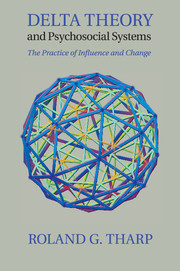Book contents
- Frontmatter
- Contents
- Figures
- Preface
- Acknowledgments
- Section One The Theory of Influence and Change
- 1 Introduction and Overview
- 2 Psychosocial Systems and the Exercise of Influence
- 3 The Zone of Proximal Development, Activity, and Semiotics
- 4 The Means of Influence
- 5 The Organization of Activity
- 6 Unifying the Study of Culture and Psychology
- Section Two The Practice of Influence and Change
- Appendix Criteria, Standards, and Guidelines Necessary for a Unified, Universal Theory
- References
- Index
4 - The Means of Influence
Published online by Cambridge University Press: 05 December 2011
- Frontmatter
- Contents
- Figures
- Preface
- Acknowledgments
- Section One The Theory of Influence and Change
- 1 Introduction and Overview
- 2 Psychosocial Systems and the Exercise of Influence
- 3 The Zone of Proximal Development, Activity, and Semiotics
- 4 The Means of Influence
- 5 The Organization of Activity
- 6 Unifying the Study of Culture and Psychology
- Section Two The Practice of Influence and Change
- Appendix Criteria, Standards, and Guidelines Necessary for a Unified, Universal Theory
- References
- Index
Summary
Influence, Assistance, Regulation
In an earlier section, I introduced the essential similarity – in psychological theory – among the terms influence, assistance, and regulation. In my gradual approach to a unifying perspective, the first step was to explore whether there is a set of means by which all human services may hope to change behavior and experience, regardless of profession or theoretical persuasion (Tharp, 1975; see also Tharp & Note, 1988). The term means of influence, I chose for its theoretical neutrality and common-language transparency. In 1989, I shifted the term to means of assistance to align those concepts with Vygotsky’s elegant formulations of assistance in the zone of proximal development (Tharp & Gallimore, 1989; Tharp, 1993). Internationally, Vygotsky’s heritors (Cultural-Historical Activity Theory, CHAT; or sociocultural theory) have magnetized the field of education but are little invoked in most other domains of human service delivery. So the clock has circled again to a time for theoretical neutrality and means of influence. The designations have varied to facilitate discourse; but the designata are the same: Modeling is modeling, and contingency management is itself.
A second reason for referring to the means of influence is even more compelling. Assistance is a benign term, appropriate to Vygotsky’s concerns in his Pedagogical Institute and to my own work in education between 1971 and this writing. Now, however, my intention is to broaden the range of sociocultural concepts so as to explain not only the effective nurturance of primary socialization and education, but to encompass even the intentional influence for the development of evil. (Any unifying theory must be so burdened.) Influence is the more inclusive term, the term stripped of values, the simple term describing how we get one another to change.
- Type
- Chapter
- Information
- Delta Theory and Psychosocial SystemsThe Practice of Influence and Change, pp. 38 - 53Publisher: Cambridge University PressPrint publication year: 2011

